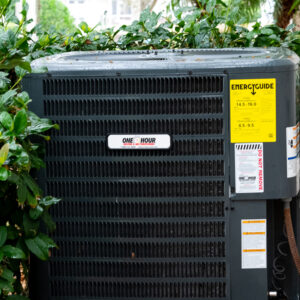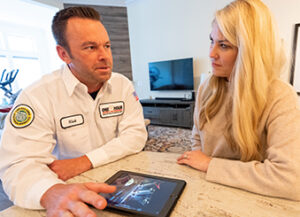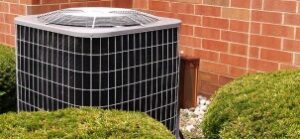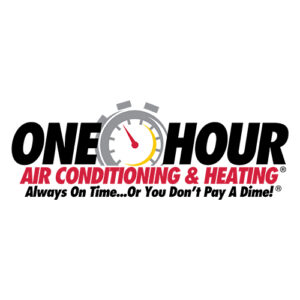SEER Rating And Tax Credits What To Know
Hey there! If you’re shopping for a new air conditioner or heat pump, you’ve probably heard the term “SEER” thrown around quite a bit. Maybe your contractor mentioned it, or you spotted it in some rebate paperwork. But now you’re wondering specifically: “What SEER rating do I need to qualify for those tax credits everyone’s talking about?”
That’s a completely reasonable question, and I’m here to give you a straight answer with no beating around the bush. At One Hour Heating and Air, we work with homeowners every single day who are trying to make smart upgrade decisions—ones that save money both now and down the road.
What Even Is a SEER Rating, Anyway?
Before we dive into the tax credit stuff, let’s quickly make sure we’re on the same page about what SEER actually means.
SEER stands for Seasonal Energy Efficiency Ratio. Think of it like the MPG (miles per gallon) rating for your air conditioner or heat pump. It measures how efficiently your system converts electricity into cooling power over an entire season. The higher the number, the less electricity it uses to keep you comfortable.
For example, if you’re replacing an old system with a SEER rating of 10 with a new system rated at 16, you could see your cooling costs drop by as much as 40%. That’s some serious savings on your monthly energy bills!
Of course, higher SEER systems typically come with higher price tags up front. That’s where tax credits come in—they can help offset that initial investment and make the more efficient choice easier on your wallet.
The Magic Numbers: What SEER Rating Qualifies for Tax Credits?
Let’s cut to the chase. The tax credits we’re talking about come from the Inflation Reduction Act of 2022, which expanded federal incentives for energy-efficient home improvements. Under this program, you can potentially get back up to 30% of the cost of qualifying HVAC equipment—up to $600 for air conditioners and up to $2,000 for heat pumps.
But not just any system will qualify. Here are the specific efficiency ratings you need:
For central air conditioners:
- Your system needs a SEER2 rating of at least 16.0 (I’ll explain that “2” in a minute)
- It also needs an EER2 of at least 12.0 (EER measures efficiency at peak load times)
For heat pumps:
- You’ll need a SEER2 rating of at least 15.2
- An EER2 of at least 11.7
- And an HSPF2 (that’s the heating efficiency rating) of at least 7.8
Wait what’s with the “2” after all these ratings? Well, in 2023, the Department of Energy changed how they test and rate HVAC equipment. The new SEER2, EER2, and HSPF2 ratings use more realistic testing conditions. So if you’re comparing systems, make sure you’re looking at SEER2 numbers, not the older SEER rating, or your comparisons will be off.
The Fine Print You Need to Know
Now, I wish it were as simple as “buy a system with these ratings and get money back,” but there are a few other requirements:
- First, the system must be installed in your primary residence—the house you actually live in most of the time. Investment properties and vacation homes don’t qualify.
- Second, the equipment must be brand new. Used or refurbished systems, even if they’re high-efficiency, won’t make the cut for tax credits.
- Third, you need professional installation. DIY installations don’t qualify, which is honestly for the best—proper installation is crucial for getting the efficiency and performance you’re paying for.
- Fourth, you’ll need something called a “Manufacturer’s Certification Statement” to include with your tax paperwork. This is a document from the equipment manufacturer certifying that the system meets the efficiency requirements. We always provide this to our customers for qualifying systems.
Also important to note: this tax credit is non-refundable. That means it can reduce what you owe in taxes, potentially down to zero, but if the credit is more than your tax liability, you won’t get the excess as a refund. You can, however, carry forward any unused portion of the credit to the next tax year.
When It Makes Sense to Call in the Pros
Installing or upgrading an HVAC system is a significant home improvement project. Here are the situations where you should definitely give us a call:
- Your current system is over 10 years old. Even if it’s still running, older systems are typically much less efficient than modern ones. If you’re seeing higher energy bills or noticing less cooling power, your aging system is probably costing you more than you realize.
- You’re facing repair after repair. If you’ve had to call for repairs more than twice in the past few years, it might be time to cut your losses. Continuing to sink money into an aging system is like throwing good money after bad.
- Your home has comfort issues. If some rooms are too hot while others are too cold, or if you’re constantly adjusting the thermostat to stay comfortable, your current system might be incorrectly sized or just wearing out.
- You’re trying to reduce your energy costs. If your utility bills keep creeping up, a high-efficiency system can make a dramatic difference. We can help you calculate the potential savings based on your actual usage patterns.
- You’re planning to stay in your home long-term. The longer you live in your home, the more you’ll benefit from energy savings. If this is your forever home, investing in higher efficiency makes even more financial sense.
Our Process: Making Your Upgrade Smooth and Simple
When you work with One Hour Heating and Air for your system upgrade, here’s what you can expect:
- We start with a real conversation about your needs. We’ll visit your home, look at your current setup, and talk about what’s working and what’s not. We consider your house size, insulation quality, ductwork condition, and most importantly, your comfort priorities and budget.
- Then we present clear options. We’ll show you several system choices that might work for your situation, with SEER2 ratings and pricing clearly spelled out. We’ll specifically point out which systems qualify for tax credits and explain the potential long-term savings of each option.
- When it’s time to install, we work efficiently and neatly. Our teams show up when promised, complete the work professionally, and leave your home as clean as they found it—or cleaner!
- After installation, we provide complete documentation. This includes everything you’ll need for tax time: model numbers, efficiency ratings, and that all-important Manufacturer’s Certification Statement.
- And we stand behind our work 100%. If something’s not right, just call us. We’ll come back and make it right without the runaround.
Your SEER Rating Questions—Answered
I know this stuff can get confusing, so let me address some of the SEER rating questions we hear most often:
What’s the real difference between SEER and SEER2?
SEER2 uses stricter testing conditions that better reflect how systems perform in real homes. As a rough comparison, a 16 SEER2 system performs similarly to a 17-18 SEER system under the old rating method.
Can I still get a 14 SEER system installed?
In some regions, 14 SEER systems might still be available for replacement purposes, but they definitely won’t qualify for federal tax credits. For the tax benefits, you need at least SEER2 16 for air conditioners.
What’s the “sweet spot” for SEER2 ratings? How high should I go?
For most homeowners, systems between SEER2 16 and 18 offer the best balance of efficiency and cost. Beyond that, the energy savings typically don’t justify the additional equipment cost unless you live in an extremely hot climate or cool your home extensively.
How much money will I actually get back from these tax credits?
You can get back 30% of your costs up to the cap—$600 for air conditioners or $2,000 for heat pumps. So if your heat pump installation costs $8,000, you could potentially get $2,000 back when you file your taxes.
What paperwork do I need to file to get the credit?
You’ll need to file IRS Form 5695 with your tax return. You should also keep all receipts, the Manufacturer’s Certification Statement, and installation documentation in your records.
You Don’t Have to Navigate This Alone
Look, I know this is a lot to take in. SEER2 ratings, tax forms, efficiency requirements—it can feel overwhelming. But that’s exactly why we’re here. At One Hour Heating and Air, we don’t just install equipment; we help you make smart decisions that pay off both immediately and for years to come.
If you’re thinking about upgrading your system and want to make sure you get those tax credits, give us a call. We’ll walk through your options in plain English, help you choose a system that qualifies, and make sure you have everything you need when tax season rolls around. Because at the end of the day, your comfort matters and so does your bottom line.
